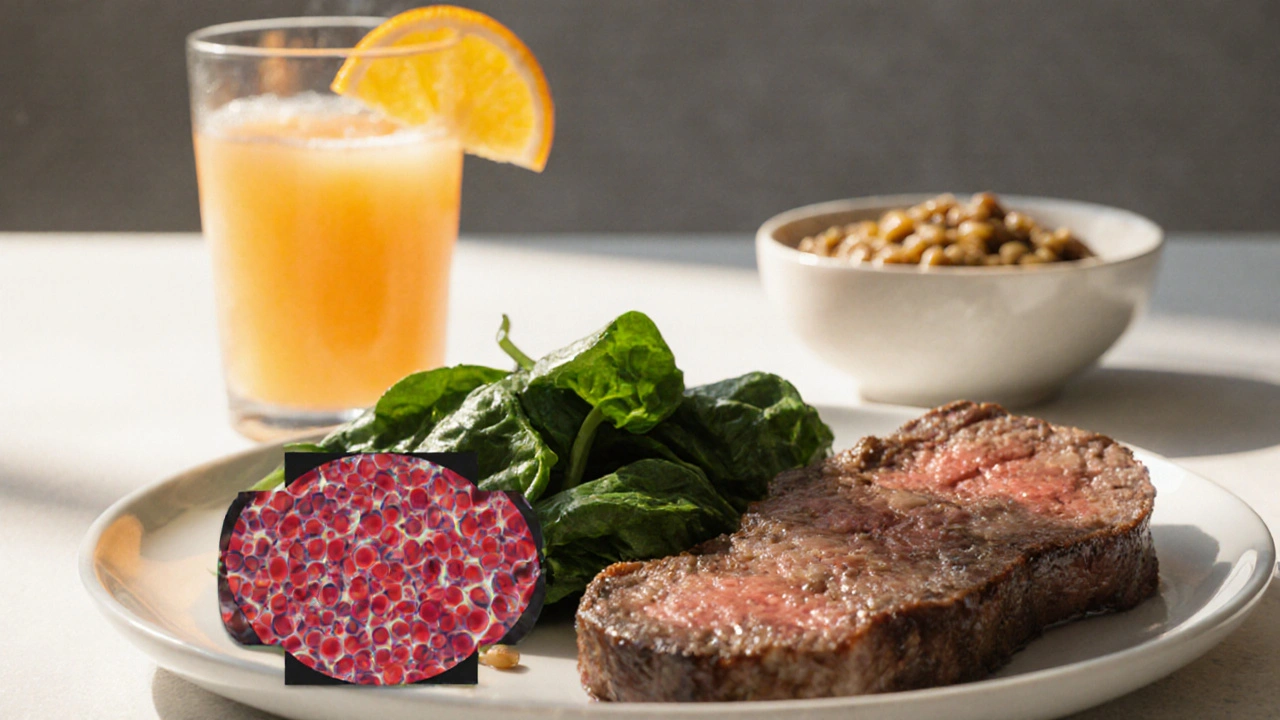Nutrition for Sickle Cell: Foods That Help Manage Pain and Crises
When you live with sickle cell anemia, a genetic blood disorder where red blood cells become rigid and block blood flow. Also known as sickle cell disease, it causes chronic pain, fatigue, and frequent hospital visits. But what many don’t realize is that what you eat can directly impact how often those painful crises happen. Good nutrition isn’t just about staying healthy—it’s a daily tool to keep your blood flowing and your body stronger.
Hydration, the simple act of drinking enough water every day is one of the most powerful things you can do. Dehydration thickens your blood, making it easier for sickle cells to clump and block vessels. That’s why doctors stress drinking at least 8–10 glasses of water daily—more if it’s hot or you’re active. Folic acid, a B vitamin needed to make new red blood cells is another key player. Your body works overtime to replace damaged red cells, and folic acid helps keep up. Foods like spinach, beans, eggs, and fortified cereals are easy ways to get it. Then there’s iron, a mineral often misunderstood in sickle cell. Unlike anemia from low iron, sickle cell patients usually have enough or even too much iron because of repeated blood transfusions. So don’t take iron supplements unless your doctor says so.
Focus on whole foods: lean proteins like chicken and fish, colorful veggies, whole grains, and healthy fats from nuts and avocados. These help reduce inflammation and give your body the energy it needs to fight infections. Avoid processed sugars, fried foods, and salty snacks—they can worsen swelling and make you more prone to crises. Many people with sickle cell also struggle with low vitamin D and zinc, so getting sunlight and eating foods like mushrooms, dairy, and pumpkin seeds can help fill those gaps.
The goal isn’t perfection—it’s consistency. Small, daily choices add up. Eating a balanced meal instead of skipping it. Choosing water over soda. Adding a handful of almonds to your snack. These aren’t fancy diets or expensive supplements. They’re simple, practical habits that real people use to feel better and avoid the ER. Below, you’ll find real guides from people who’ve lived this—what they eat, what works, and what they wish they’d known sooner.
Diet & Nutrition Strategies for Managing Sickle Cell Anemia
Learn how specific nutrients, hydration, and meal planning can help manage sickle cell anemia symptoms, reduce pain crises, and improve overall health.
More
